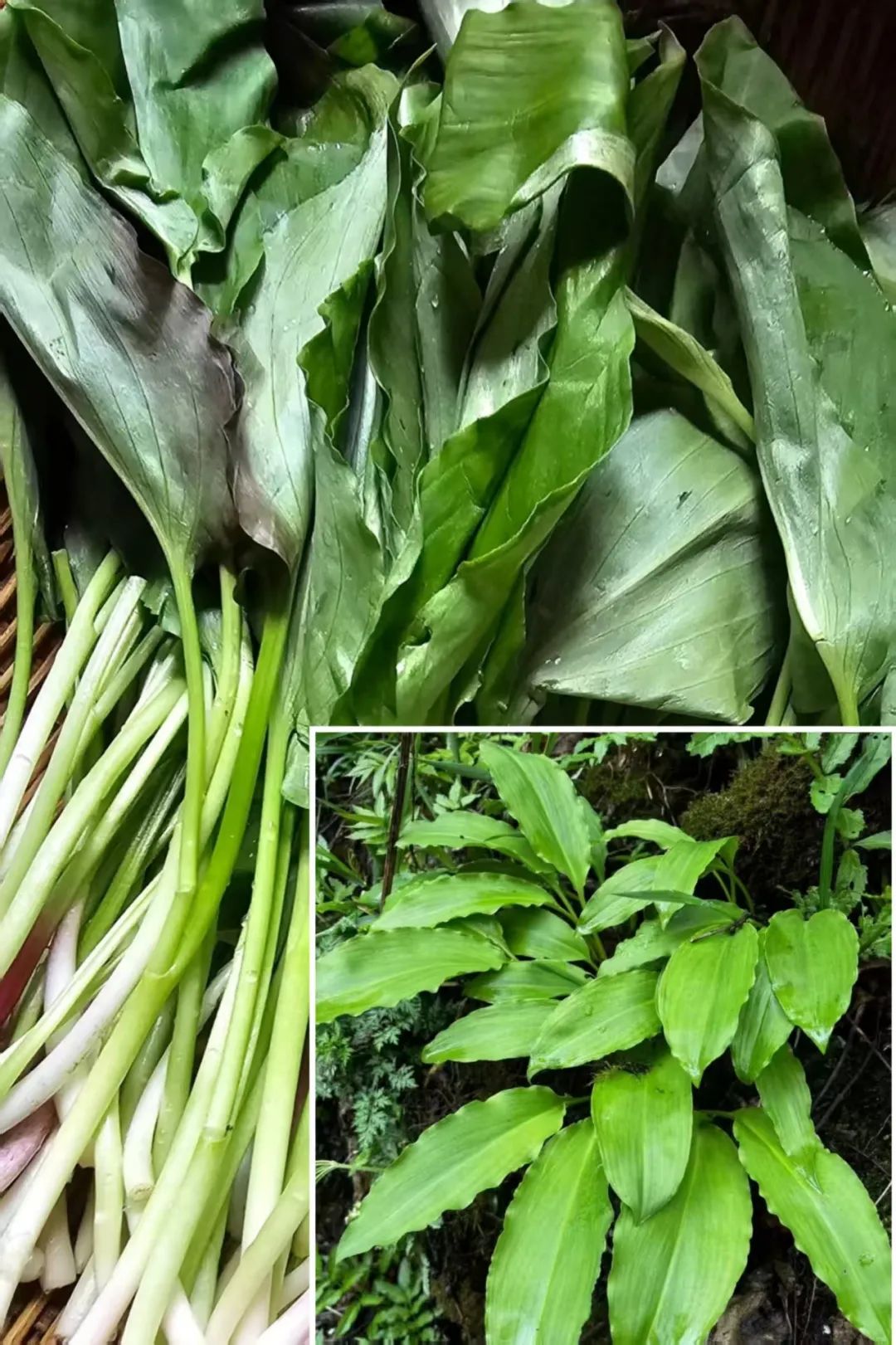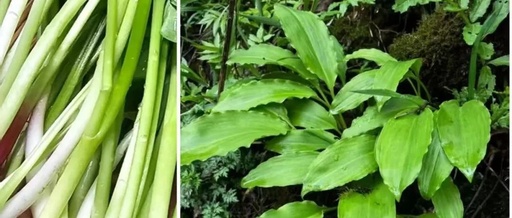
In the mountains, cured meats, often referred to as “old cured meat,” can be preserved for a year or even longer without spoiling. This is due to the long-term exposure to smoke from cooking over a wood fire, which has a sterilizing effect.
The smoke kills bacteria, and the aroma that penetrates the meat comes from the fragrance produced by the complete combustion of various plants, making this cured meat exceptionally delicious.
If at this time, one were to forage for Lu Er Jiu (Deer Ear Chives) in the mountains and stir-fry it with cured meat, the fragrance of the chives and the cured meat would elevate each other, creating an intoxicating aroma.
Besides stir-frying with cured meat, Lu Er Jiu can also be eaten raw, lightly stir-fried, cooked with eggs, stewed with tofu, wrapped in roasted meat, used in pancakes, added to hot pot, or even cleaned, salted, and dried to make a soup base. Its leafless dried version is a staple in Tibetan hot pot.……
Upon first seeing Lu Er Jiu, I immediately thought of Yu Zan Hua (Hosta), as I have only seen deer and their ears on television, but I have grown Yu Zan Hua myself.
The leaves of Lu Er Jiu are very similar to those of Yu Zan Hua, being oval and broad, hence it is also known as Yu Zan Ye Jiu (Hosta Leaf Chives). Both belong to the onion family, but the leaves of Lu Er Jiu are thicker than those of Yu Zan Hua, which adds to its flavor and culinary value.
Its name, Lu Er, can also be a homophone for Liù Èr (Six Two), hence it is also called Liù Èr Jiu. The term “jiu” refers to chives, which also belong to the onion family, and the flowers of Lu Er Jiu resemble those of chives, with a similar aroma, but Lu Er Jiu is spicier, with tender, crunchy stems that are sweet and juicy.
It is precisely this spiciness and sweetness that gives Lu Er Jiu the ability to dispel wind, invigorate blood circulation, stop bleeding, relieve pain, tonify the kidneys, support yang, and enhance immunity.
However, as a food that is also used as medicine, its blood-invigorating ability is not as strong as that of San Qi (Notoginseng) or Chuan Qiong (Ligusticum wallichii), so healthy individuals generally do not need to worry about excessive blood activation when consuming it.
For those who need to eliminate blood stasis, spring is the perfect time to consume Lu Er Jiu, as the yang energy in the body is rising, which is most conducive to unblocking the blood vessels and eliminating stagnation. Therefore, individuals with a blood stasis constitution (characterized by dull skin and prominent blue veins under the tongue) should enjoy Lu Er Jiu at this time, relishing its flavor while achieving remarkable results in resolving blood stasis.
Its sweetness is also the source of its kidney-tonifying properties, providing rich nutrients: vitamins that protect vision and promote bone health; minerals that enhance blood circulation; and dietary fiber that aids digestion, among others.
Lu Er Jiu is a wild plant, typically found on semi-shaded cliffs at altitudes of around 2000 meters, giving it an ethereal quality. Hence, it is also known as Tian Jiu (Heavenly Chives).
Its growth process is quite unique: one leaf in the first year, two leaves in the second year, three leaves in the third year… it is difficult to cultivate, and most of what is tasted is foraged from the wild.
Have you ever eaten Lu Er Jiu?

